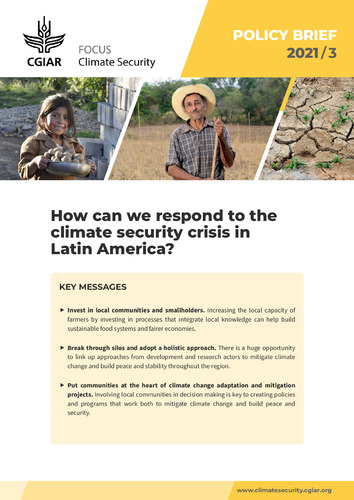How can we respond to the climate security crisis Latin America?
Over the past decade, the world has become considerably less peaceful. The 2021 Global Peace
Index (GPI) reports that the average level of global peacefulness deteriorated for the ninth time in
thirteen years in 2020, in part due to increased political instability and civil unrest fuelled by the
COVID-19 pandemic (Institute for Economics & Peace 2021). The evidence on conflicts around
the world since the turn of the century points to a simple conclusion: conflicts, grievances and
insecurities are increasingly being affected by changing climates, environmental degradation,
food insecurity, and the struggle to control a finite pool of natural resources.
The Central American Dry Corridor (CADC) is a region particularly at risk of climate change and
fragility. Guatemala, El Salvador, Honduras and Nicaragua are projected to suffer strong rainfall
variability and intense droughts in the coming years. Such droughts and floods threaten food
security in these countries, which are already prone to high levels of violent crime and political
instability. The Latin America and Caribbean region as a whole is the most violent region on
earth, according to the United Nations Development Program (UNDP 2021).

